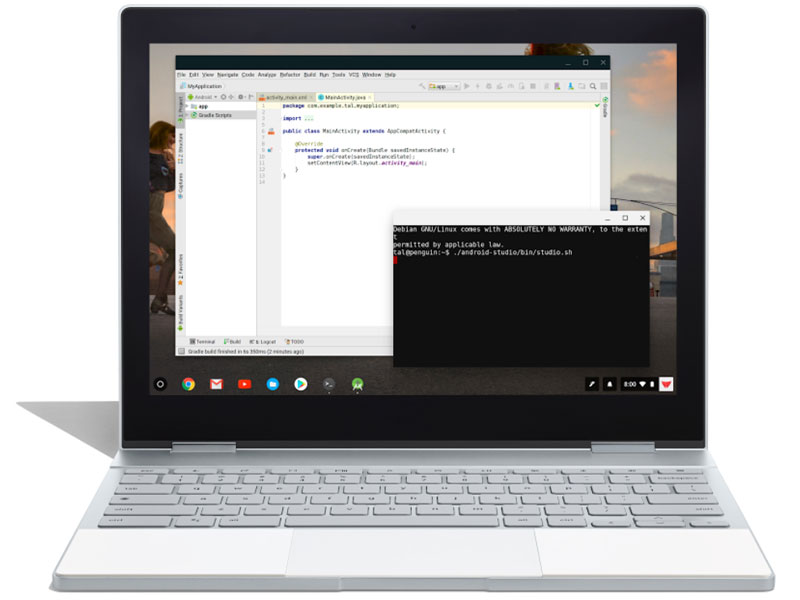This year they have gone a step further incorporating Linux support by default, making it accessible to all users and, above all, for developers, who mainly use this operating system to create their applications.
From now on, to use Linux on these devices you just have to open the Chrome OS application launcher and search for “Terminal” to run the Termina virtual machine, which starts a Debian 9.0 Stretch Linux container. And that’s it, with that simple gesture you’ll already be using the Linux Debian distribution in Chrome OS.
Chromebooks are also compatible with Ubuntu and Fedora, but they require an installation process that implies having more advanced computer knowledge.
When a user installs a Linux application, it will appear next to the Chrome OS vApp and you will only need to click on it to start using it. The user experience will be the same as if it were executed natively. It will be possible to modify the size of the window and move it and you can also access the files in the Chromebook from the virtual machine and change them from one environment to another.
All Chromebooks with AMD and Intel hardware will integrate support for Linux, although it is true that to perform certain tasks in Linux is necessary to have a good performance hardware.
The possibility of having Android, Chrome OS and Linux on the same computer and in an integrated environment is being very well received by both the user community and the developers.
We’d like to remind that the UDS Enterprise connection broker is fully compatible with Chromebooks to manage and deploy Windows and Linux virtual desktops and applications. In fact, a school in New York is using our VDI & vApp broker for that purpose to teach robotics.
Source: ZDNet








0 Comments